Robotic complex Rheinmetall Mission Master. Transport, scout and fighter on the same platform
Modular approach
For the first time, the Mission Master project was told in 2017. In the future, the company-developer revealed new information and showed the newly developed modifications of this RTK. The latest information about the development of the project came just a few days ago. In the next advertising video, the work of the new military version of the Mission Master, which received missile weapons, was demonstrated.
RTC from Rheinmetall is based on a universal wheeled chassis with the required characteristics. The chassis has a cargo area suitable for mounting various equipment. It can be installed means of transportation of goods, optical systems or a variety of weapons. The installation of the target modules is not associated with the reworking of the chassis itself, although the finished machines may differ significantly from each other. Maximum payload - 600 kg. At the same time, some modules are noticeably lighter and leave some load carrying capacity.
The platform is made in the form of a compact four-axle machine and has a recognizable appearance. A power unit of unnamed type and control equipment are placed inside the case. The chassis is equipped with a set of video cameras for driving, and can also be equipped with lidars. The on-board equipment provides constant two-way communication with the operator, and also allows you to connect various target loads and control it remotely.
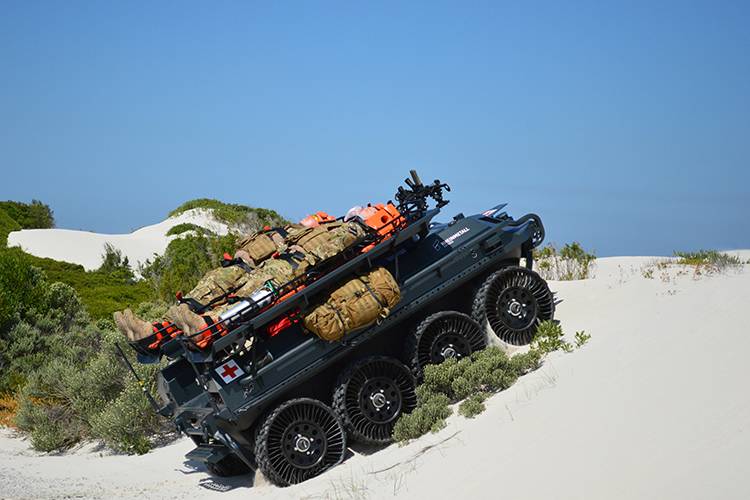
Mission Master Cargo transports two wounded
Mission Master chassis on the highway reaches speeds up to 40 km / h. The car can float due to the rotation of the wheels, accelerating to 5 km / h. Control and communication are carried out using a wearable remote. All functions of the RTK are controlled by one operator.
Unmarked transport
The simplest option to retrofit the chassis is called Mission Master Cargo. It is considered as a "mule" and is intended for the transport of a variety of goods. The payload is placed directly on the roof of the case or on additional trunk frames of several versions. Such devices can be mounted on the sides or above the roof - depending on the type of cargo and the problem to be solved.
Equipment, ammunition, etc. it is proposed to transport on the roof and in side restraints from frames and belts. Mission Master Cargo can also operate as an ambulance transport. A pair of stretcher on longitudinal baskets on the roof is used to evacuate the lying wounded. Safety of the wounded is provided by safety belts and restraints.
Reconnaissance vehicle
Mission Master UGV-S RTK is designed for surveillance and reconnaissance. In this case, a larger superstructure and a telescopic mast are mounted on the chassis. The latter houses a block of optoelectronic equipment. The UGV-S can reach the required position and carry out the observation, raising the optics to the required height.
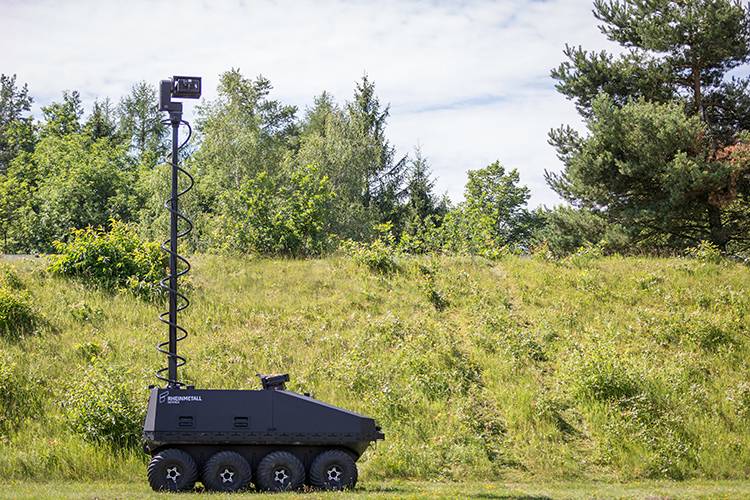
UGV-S reconnaissance vehicle with a raised mast
The UGV-S operator conducts real-time monitoring, and thanks to this, the unit immediately receives relevant information about the situation. At the same time, reconnaissance does not lead to risks for personnel - fighters can remain in a safe place while the RTC is operating in the danger zone.
Combat versions
The first of the combat options appeared RTK UGV-P. This machine is designated as a means of fire support units and has the appropriate equipment. In this version, the chassis receives a remote-controlled combat module with machine-gun and grenade launchers. Also shown is a prototype supplemented with a rear casing for equipment and safety arcs.
The main task of the UGV-P is direct fire support of the unit or independent work at a distance from the operator. It was also proposed to use such a technique for patrolling, assault, etc. The proposed set of weapons allows you to effectively deal with manpower, lightly armored vehicles and unfortified buildings.
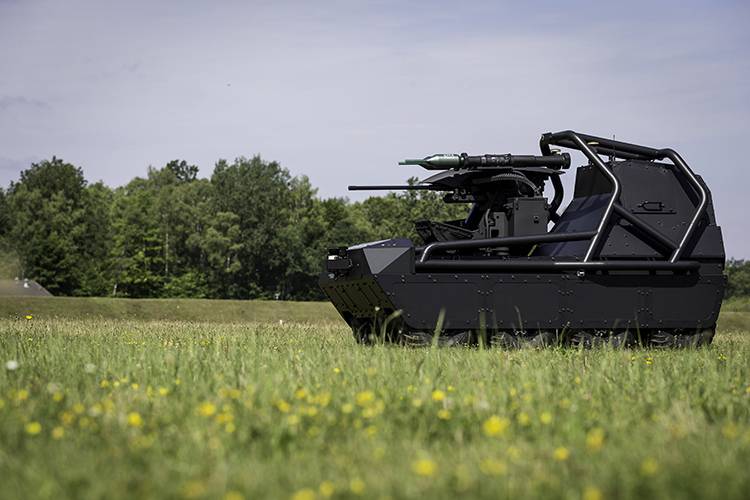
Mission Master UGV-P with machinegun grenade armament
In the spring of this year, Rheinmetall showed a new combat version of the Mission Master. This modification of the RTK is completed with a launcher for missiles. A pan-tilt unit was used, on which two FZ220 packages were installed with seven guides on each and an optical-electronic equipment unit for guidance. In fact, we are talking about creating a short-range robotic rocket system.
This version of the Mission Master can use unguided and guided 70 mm caliber missiles. It is proposed to be used to inflict point or area strikes on enemy targets. Depending on the type of missiles used, the MLRS based on the Mission Master is capable of destroying manpower, fortifications and various equipment. Control systems allow you to shoot single and a volley. Shooting all ammunition takes 1,6 seconds.
Equipment on landfills
Since 2017, various prototypes of the Rheinmetall Mission Master family regularly undergo various tests under different polygon conditions. Checks are carried out both in Germany and in other countries. Their help determines the strengths and weaknesses of the new technology and ways of its modernization. In addition, the interaction of the RTK and the living fighters is being worked out.
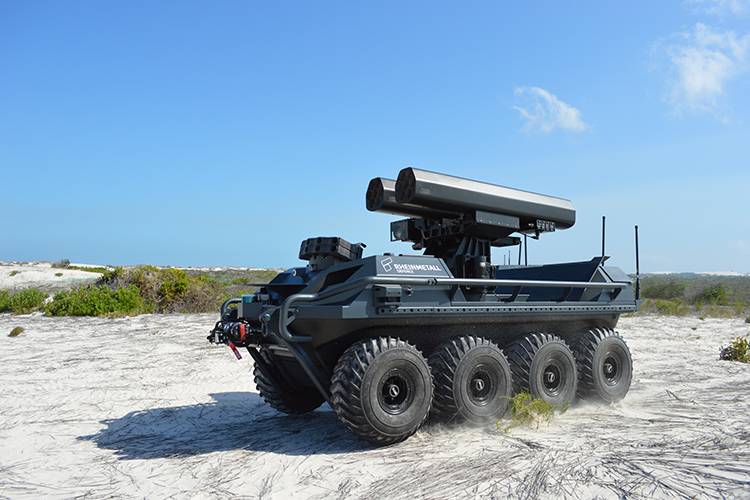
The newest version of the complex - light MLRS
Some results of such events are of interest. So, in September last year, Rheinmetall participated in the competition ELK-2018. Its RTK Mission Master won by a large margin in the category of “mules” - vehicles for infantry escorts.
A few days ago, the company-developer has published a new video showing the operation of the complex in the configuration of the MLRS. Shots with moving over rough terrain and shooting were shot at the Denel Overberg in South Africa. It should be expected that new tests will take place in the near future, and Rheinmetall will surely show their most interesting moments.
Pending order
The promising RTK Mission Master was first shown two years ago. Then, specialists and the public were shown a universal chassis and several options for the target load for it. To date, all this technique has been tested at different sites, and in addition, new samples of a different purpose have joined it.
However, the Mission Master RTK has not yet been launched into the series. This system attracts attention and becomes a topic for discussion, but contracts for the supply of finished samples are not yet available. Apparently, potential customers are not yet ready to acquire and put into service such a complex - with all its advantages.
The advantages and positive qualities of RTK Mission Master and others like him are obvious. Such equipment in the transport configuration is able to follow the fighters and transport their supplies, weapon or equipment, simplifying the passage of the route and the solution of a combat mission. RTK with surveillance systems allows reconnaissance with minimal risks, and the combat vehicle is able to support infantry with fire or even independently solve all firing tasks.
However, this technique has certain disadvantages. First of all, this is a high degree of novelty, which requires long-term refinement in order to eliminate possible risks. In addition, for the operation of the RTK under the control of the operator, stable radio communication is required, due to which the enemy’s electronic warfare equipment becomes a serious threat. The defeat of the enemy’s RTC by enemy fire can lead to the loss of ammunition and other “baggage” or to the impossibility of fire support in difficult conditions.
However, when solving all technical issues and properly organizing the use of the RTK, the Mission Master in any configuration can make a significant contribution to the solution of various combat missions. This suggests that the modular complex from Rheinmetall will still be of interest to customers and will be able to go into the series.
The absence of contracts at the moment can not be considered a definite problem. In the current environment, the company-developer gets the opportunity without haste to carry out all development work and bring to the market a full-fledged and ready-made military product. In addition, the development of the modular RTK idea may be developed, and in the future, new versions of the Mission Master for other missions and operations will appear. And the future customer will be able to get a robotic complex with more features.
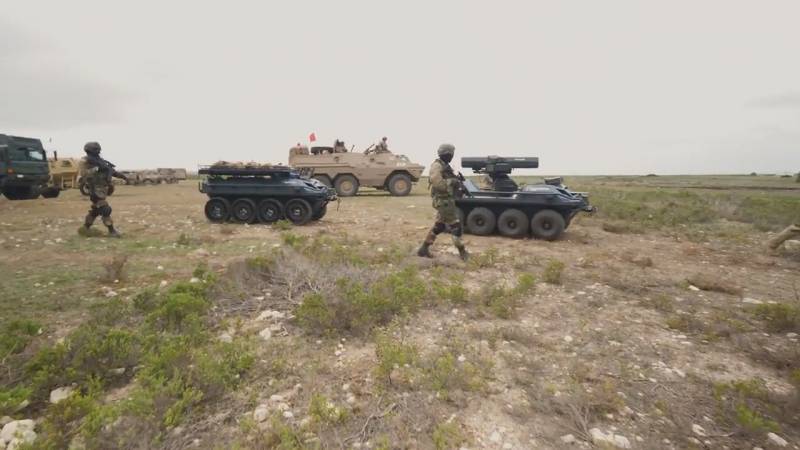
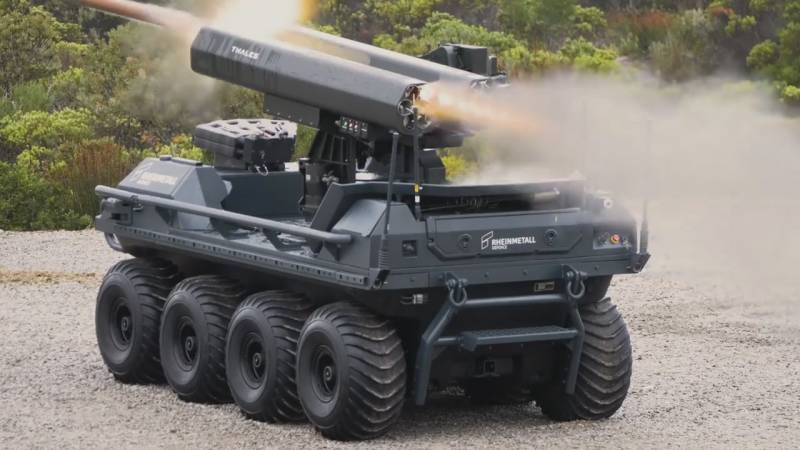
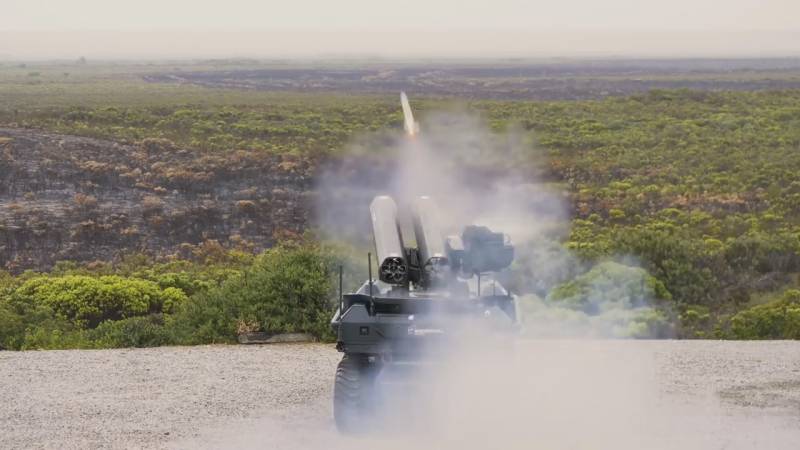
Information